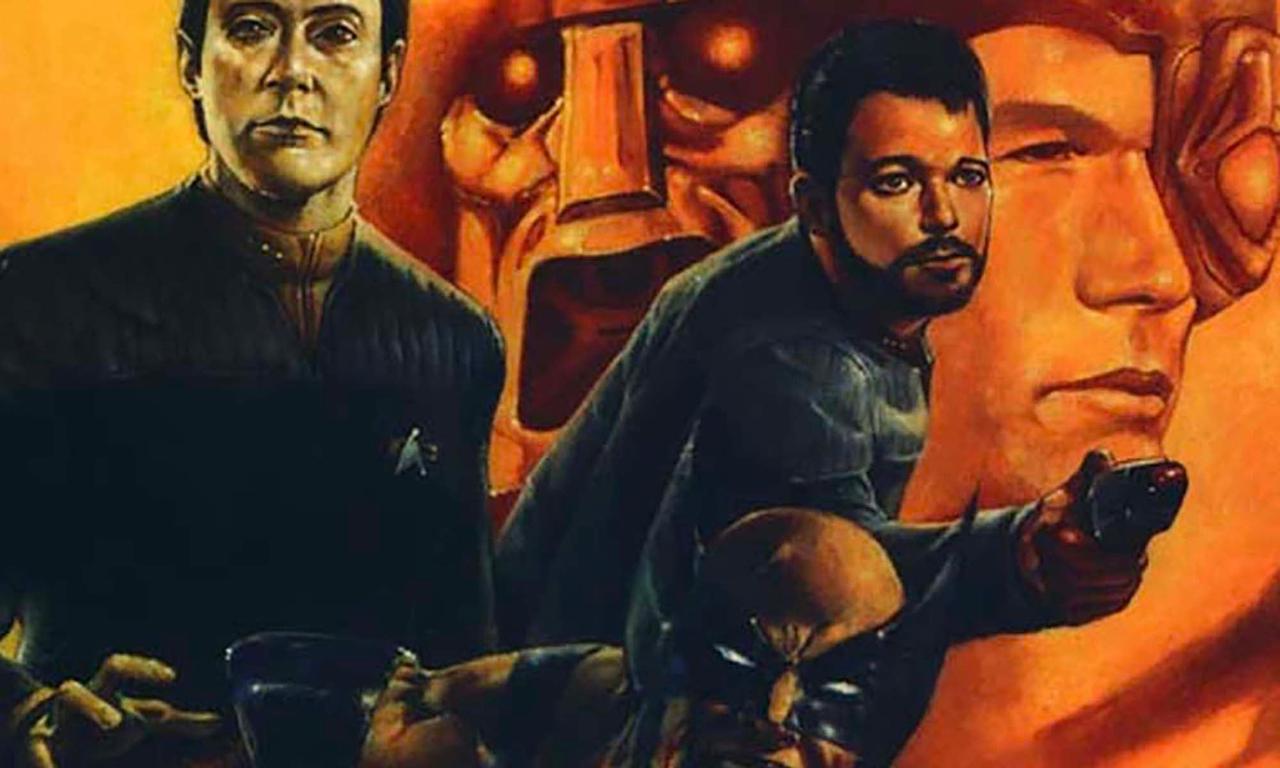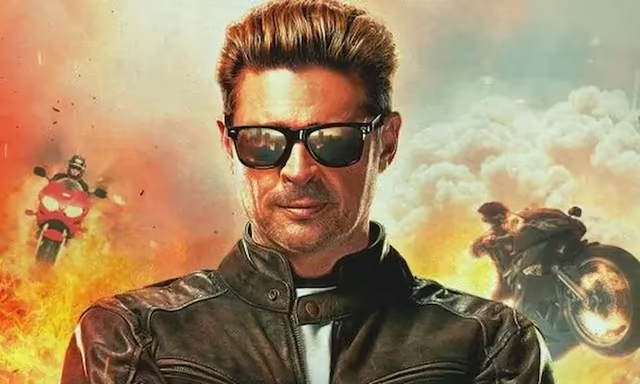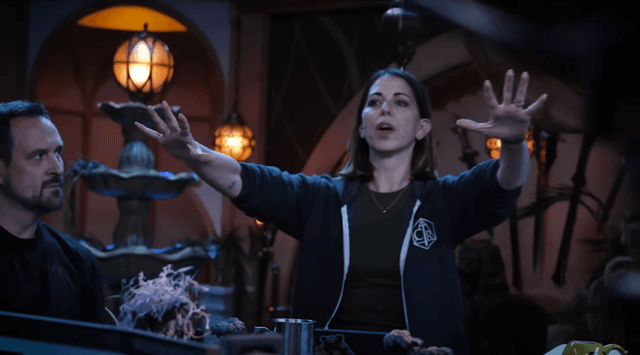If you click on a link and make a purchase we may receive a small commission. Read our editorial policy.
Star Trek: The 10 best Star Trek comics from Marvel, DC, IDW Publishing, and more
These are the voyages of the Star Trek cast and crew across multiple comic publishers and universes in the world of comics

Welcome to the world of Star Trek comics!
In 1966, Gene Roddenberry launched what he called 'Wagon Train to the Stars.' Although he sold the studio on the idea that Star Trek would be a Western in space, Roddenberry was more inspired by Gulliver's Travels. So he created an adventure series with something to say about political, philosophical, and social issues and shaped history. Not only did Star Trek champion and codify 'infinite diversity in infinite combinations,' it made science appealing. It even inspired numerous scientists to enter STEM and influenced fandoms far beyond its own. Slash fiction fans can thank Mr. Spock (Leonard Nimoy) and Captain James T. Kirk (William Shatner) from Star Trek: The Original Series (TOS) for legitimizing the idea of shipping with Diane Marchant's 1974 Kirk/Spock story 'A Fragment Out of Time.'
The original Stat Trek was canceled after three seasons. However, with the help of a loyal fan base (known as Trekkies or Trekkers) and a successful run in syndication, the franchise didn't die when the series first ended. Nearly two decades afterStar Trek: The Original Series entered syndication, Star Trek was the number one syndicated show on television in 1986 according to Nielsen. Just one year later, Star Trek: The Next Generation (TNG) debuted and lead a franchise revival that inspired more Trekkies for generations to come. However, with the series off the air for a long time between Star Trek: The Original Series's end and Star Trek: The Next Generation's beginning, Trekkies were hungry for more content starring the Enterprise crew, and beta canon and fanon (fan + canon = fanon) were born.
In Star Trek, events taking place within the live-action episodes and movies are official canon or alpha canon, while other official content is mostly up for debate. The beta canon includes most of the official Star Trek novels, video games, and comic lines. But as the Star Trek TV revival continues to take Trekkies to strange new worlds, production writers have started to include details from beta canon stories. Star Trek: Prodigy introduced Rok-Tahk, a Brikarian (first appeared in the Star Trek: The Next Generation - Starfleet Academy novel, Worf's First Adventure), and chimerium (the legally controlled material used in Klingon cloaking devices first appeared in Starfleet Corps of Engineers and The Next Generation books), and both beta canon and fanon influenced the Kobayashi Maru sequence.
Beta canon is the key to boldly exploring exciting new Star Trek stories. Whether you're eager for more information about your favorite character or on the hunt for new adventures, some of the franchise's best stories are given life in the panels of a comic book. But it's easy to feel overwhelmed. Since Gold Key Comics published the first Star Trek comic book in 1967, although it couldn't use storylines from the series, thousands more Star Trek comics over multiple series have been published. Since it can be hard to know where to begin, we list the ten best storylines to get you started below.
Star Trek: The Next Generation – Mirror Broken

Space... The Final Frontier. These are the voyages of the ISS Enterprise-D and its captain, Mirror Picard. Its continuing mission: to conquer strange new worlds, to enslave new life and new civilizations all for the Terran Empire! IDW Publishing's Star Trek: The Next Generation: Mirror Broken by Scott and David Tipton, J.K. Woodward, Charlie Kirchoff, and Carlos Nieto takes you into the other dimension where all of your favorite TNG heroes have grown up to value what the publisher describes as their "worst instincts and potentials" (just wait until you see Wesley Crusher's hair).
In the Mirror Universe, officers are valued for their brutality, cruelty, and cunning, not their kindness. However, that's what makes the Mirror Universe so appealing, the chance to see our Star Trek's greatest heroes wrestle with facing off against the worst versions of themselves, which forces them to confront their own demons.
Since the The Next Generation crew never went to the perennial fan-favorite Mirror Universe onscreen, the Mirror Picard versus Picard showdown in the comics is exciting to see. And that's only just the beginning; the Mirror Saga continued with Star Trek: The Mirror War.
Star Trek: The Original Series – Debt of Honor
Debt of Honor by Chris Claremont, Adam Hughes, Karl Story, Tom McCraw, and Robert M. Pinaha was initially published in 1992 when DC still had the Star Trek license. Nearly 30 years later, it was re-released at IDW, introducing it to a whole new generation of Trekkies.
The Star Trek OGN picks up after the Star Trek IV: The Voyage Home with Kirk and Gillian, the whale biologist from the film. Now living in the 23rd century, Gillian is adapting to life in the future. However, leaving her century is more challenging than expected (even the textiles don't feel right on her skin), but luckily Kirk is there to help her through. But Kirk and Gillian's vacation to check on the whales they brought to the future is only a ruse, and Kirk quickly finds himself aboard the Enterprise on a mission alongside the Klingons and Romulans.
Debt of Honor sends Kirk on a mission that leaves him thinking about his past. Interwoven throughout the story are flashbacks to the ups and downs of Kirk's career, providing excellent insight into the franchise's first captain, who is haunted by the destruction of the Enterprise and death of his son in Star Trek III: The Search for Spock.
Star Trek: Discovery – Adventures in the 32nd Century

IDW's Star Trek: Discovery – Adventures in the 32nd Century by Mike Johnson, Angel Hernandez, J.D. Mettler, and Neil Uyetake is a four-issue Discovery (DISCO) miniseries featuring Grudge the Cat, Lieutenant Keyla Detmer, Science Officer Linus, and Adira Tal. Each character gets a spotlight issue, giving us a deeper understanding of the psychology and backgrounds of DISCO's less featured characters.
The series contains many highlights like the first issue, which is a flashback tale told from Queen Grudge's perspective. It delves into the monarch's relationship with Cleveland Booker. We learn how Booker found his Queen and what she loves about him in return. And yesh, it's the tasty treats! Booker always gives his Queen the 32nd Century version of Fancy Feast. Afte all, she is too good for replicator food, not like that pathetic Spot.
But this miniseries gets a special shout-out for its second issue about Adira Tal and Gray's history together. Trans fans are desperate for more representation on screen and in comics, and the storyline gets the couple's dynamic perfectly. How do you like them apples?
Star Trek: Voyager – Seven's Reckoning

Seven's Reckoning by Dave Baker, Angel Hernandez, Ronda Pattison, and Neil Uyetake is a four-issue series during Voyager's fourth season. The series explores Seven's struggle to find her individuality and humanity, leading to hysterical exchanges about humanity's propensity for distracting outbursts between the ex-Borg and Tuvok. Most importantly, Seven learns about how stories reflect a society's cultures and values, which can either encourage our individuality or enslave us.
As an ex-Borg, Seven of Nine provided the Voyager writers with endless opportunities to use her as humanity's foil. The comics are no different, and Seven's Reckoning delivers on this theme. Plus, I'm as subtle about how much I like Baker's writing as Beckett Mariner is about her crush on Jen the Andorian. But seriously, the Eisner-nominated creator's work (not to mention all the other talent) on this Voyager run is worth the price of a collection alone.
Star Trek: The Original Series – Star Trek #24 and #25
DC Comics held the license to publish Star Trek stories from 1984 to 1996. DC's main title was Star Trek, published in two series (the first one is set after Star Trek II: The Wrath of Khan and the second after Star Trek V: The Final Frontier), comprising 136 issues, nine annuals, and several special issues. DC's Star Trek harnesses the full force of Trek mythology (and was the first publisher to do so), with characters from all over the universe making appearances.
The Star Trek run not only included stories featuring characters from The Original Series, Star Trek: The Animated Series (like the Edosian Arex and Caitian M'Ress), and the franchise films, but it also introduced new ones like Ensign William Bearclaw, Ensign Nancy Bryce, Dr. Chu-Sa, Lt. Commander Maria Morelli, Ensign Elizabeth Sherwood, and the Klingons Konom and Bernie.
Sometimes the stories in DC Comics era are straight-up sequels to storylines started in the films or TV shows. But the series shines when it introduces new ideas to the Star Trek canon.
In Star Trek #24 and #25, 'Double Blind,' by Diane Duane, Tom Sutton, Michele Wolfman, Agustin Mas, and Ricardo Villagran, the Enterprise crew is tricked into helping a lobster-like species and a domestic cat-like species (no, not the Caitians or Kizinti). Ultimately, Kirk comes up with a typical solution for him that requires ignoring the Prime Directive to end the long feud between the two species based on mutual misunderstanding and fear. Who doesn't love Captain Kirk being a Captain Kirk?
Star Trek: Starfleet Academy
Following approximately six months behind the Star Trek: Deep Space Nine's (DS9) continuity, Marvel Presents Paramount Comics' Star Trek: Starfleet Academy series follows the Omega Squad. It features Deep Space Nine's Nog and his Academy classmates, a new group of cadets that we meet in Prime Directive, Starfleet Academy's first issue, by Chris Cooper, Chris Renaud, Andy Lanning, Jim Novak, and Kevin Somers. The comic book series also has cameo appearances from characters on the TV shows like Groundskeeper Boothby from the The Next Generation episode 'The First Duty' and Red Squad from the Deep Space Nine episodes such as 'Valiant.'
Strange New Worlds' Captain Christopher Pike even appears in Starfleet Academy when Nog and Omega Squad wind up on Talos IV to save the Talosians from the Jem'Hadar in Star Trek: Starfleet Academy #9. The story builds on 'The Cage' and 'The Menagerie Part I and Part II,' 100 years in the past on the Star Trek timeline. Pike explains to the cadets that Starfleet has since declared Talos IV off-limits because of the dangers of Talosian mind control (which unfortunately don't work so well on angry Jem'Hadar).
Star Trek: Early Voyages and Starfleet Academy were the two most popular series published by Marvel during its stint publishing Star Trek comics. However, it is great to see more of Nog as a cadet. And today, Starfleet Academy is more relevant than ever with Paramount+'s announcement that they are developing a Starfleet Academy TV series.
Star Trek: Voyager

The USS Voyager crew appeared for the first time ever in their own comic book series in 1996, published by Marvel Presents Paramounts Comics. The 15-issue series by Laurie Sutton, Jesus Redondo, Matt Webb, John Kalisz, and Chris Eliopoulos (and periodically some guest creators) covers a lot of narrative ground, following the USS Voyager crew from Voyage season two through season four.
As the first series in a long line of great Voyager content in beta canon, the Paramount run starring Captain Janeway and her crew deserves a special spot in your short box. After all, she is the first female captain to star in her own series!
Star Trek: Deep Space Nine
Paramount Comics picked up Star Trek: Deep Space Nine in 1996, and the series ran until 1998. Although the Deep Space Nine series takes place during the show's fourth and fifth seasons—connecting it to Nog and the Star Trek: Starfleet Academy series — it continues stories from earlier seasons, as well. The best Star Trek comics allow creators to return to their favorite stories from the TV shows. And Deep SPace Nine does just that, with Lwaxana Troi, who already has a penchant for showing up when you least expect it.
On DS9, Lwaxana Troi made several memorable guest appearances in the series, with her first being 'The Forsaken,' in which the daughter of the Fifth House of Betazed, the holder of the Sacred Chalice of Rixx, and heir to the Holy Rings of Betazed gets a huge middle-school-sized crush on Odo. Unfortunately for the Constable (who does not understand the concepts the solids call 'love' yet), he is trapped in an elevator episode and a fantastic storyline ensues. The Lwaxana and Odo story is picked up again in the season three episode 'Fascination.' And then again, in Paramount Comics.
When the Holy Rings of Betazed of Surprise shows up in issue ten by Andy Mangels, Michael Martin, Terry Pallot, Al Milgrom, John Kalisz, and Chris Eliopoulos, she upends the whole promenade for her 'Wedding of Doom.' Not only does this series do a good job of bringing you into the wacky wartime world of Deeep Space Nine, it also delivers small lines that the most ardent Trekkie will love. Garak and the Doctor have a similar exchange to the one in Star Trek VI: Undiscovered Country, with Garak asking the Doctor if he's read Shakespeare in the Cardassian.
Star Trek: The Next Generation/X-Men

Star Trek: The Next Generation/X-Men: Planet X by Michael Jan Friedman is the answer to franchise fatigue, am I right? Whether you're a Trekkie or a True Believer, thinking about Sir Patrick Stewart's Captain Picard meeting Sir Partick Stewart's Professor Charles Xavier just seems like a good time. So, of course, the eponymous crossover novel starring the X-Men and TNG bridge crew made the New York Times bestseller's list when it came out, leading to a follow-up Marvel Comics one-shot.
Yes, Planet X goes there (re: the two men's likeness), which is pretty impressive considering Friedman wrote the book in 1998. Picard even comments on the similarities between him and Professor X during a holodeck simulation, "As the doctor had warned him, he and the professor bore a passing resemblance."
With the success of Planet X, the two men finally had a chance to meet in the panels of a comic book. While Planet X took place in the Star Trek Universe, Star Trek: The Next Generation/X-Men: Second Contact by Dan Abnett, Ian Edington, Cary Nord, Scott Koblish, Liquid! and Chris Eliopoulos takes place on Earth in the '90s, where the crew of the Enterprise-E must locate Xavier's School for Gifted Youngsters. Always the ladies' man, Jean-Luc hits it off with Storm.
Star Trek: Strange New Worlds
No, this isn't an adaptation of the Paramount+ series. This happened years before, in comic books.
"Gary Mitchell was an ant, and I am a lion!" Created by John Byrne in 2013, the comic book Strange New Worlds uses imagery from The Original Series to tell the untold sequel to the second pilot, 'Where No Man Has Gone Before.' Yes, that means this Star Trek photonovel is all about the USS. Enterprise crew returning to Delta Vega, and Captain Kirk must confront his past demons Gary Mitchell.
The Strange New Worlds photonovel is essential reading if you love the Star Trek: Lower Decks episode 'Second Contact.' It's not the only comic to return to Delta Vega. But it's the only Gary Mitchell comic to use Gary Lockwood's likeness to explore the character's God-like abilities. Initially planned as a one-shot, SNW did well enough to lead to Byrne's ongoing photonovel series Star Trek: New Visions. The photonovels are perfect if you are craving new stories with the The Original Series bridge crew, mainly because Byrne uses images from the series to tell the stories.
Follow Popverse for upcoming event coverage and news
Find out how we conduct our review by reading our review policy
Let Popverse be your tour guide through the wilderness of pop culture
Sign in and let us help you find your new favorite thing.
















Comments
Want to join the discussion? Please activate your account first.
Visit Reedpop ID if you need to resend the confirmation email.